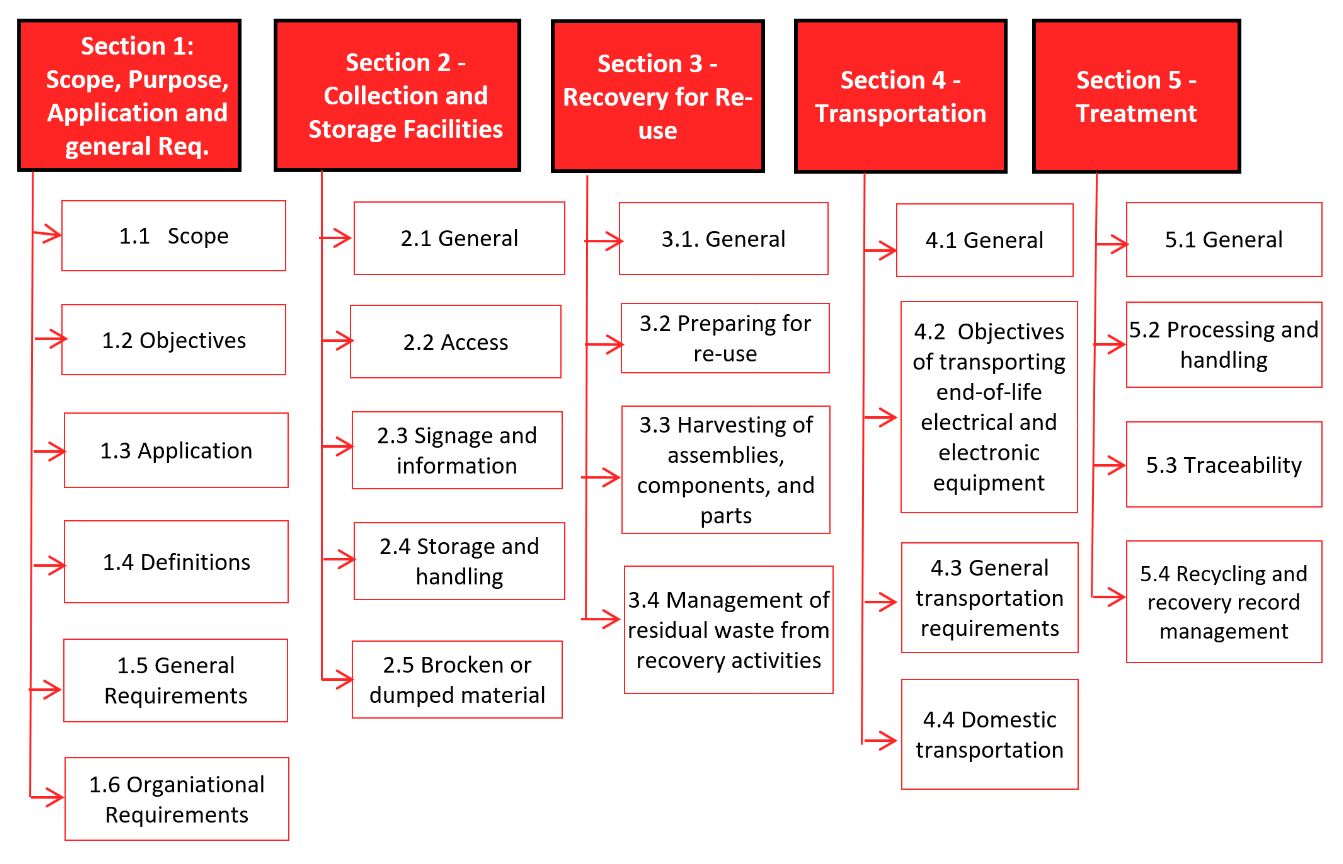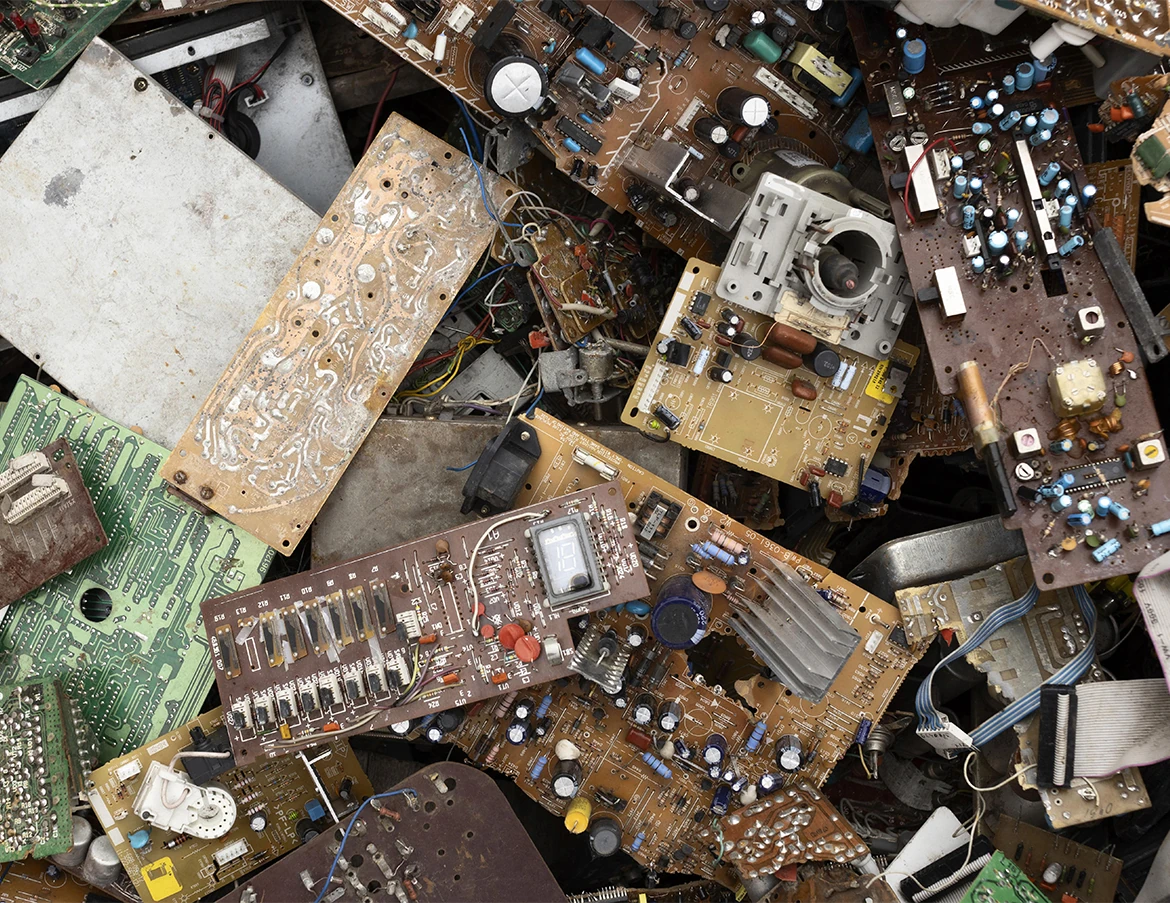Introduction
The AS/NZS 5377 (also mentioned as AS 5377) standard was prepared by the Joint Standards Australia/Standards New Zealand Committee EV-019, E-waste and published in February 2013. This standard outline the minimum requirements for the safe and environmentally sound collection, storage, transport and treatment of end-of-life electrical and electronic equipment, known as E-waste, in order to maximize re-use and material recovery, reduce or eliminate the amount of waste from this equipment going to final point of disposal operations such as landfill, safeguard worker health, and minimize harm to the environment.
History of E-waste Recycling in Australia
In August 2011, the Product Stewardship Act 2011 commenced in August 2011 and provides a legislative framework for national product stewardship schemes as a key commitment by the Australian Government under the National Waste Policy which had been endorsed by Council of Australian Governments (COAG) in August 2010.
The Product Stewardship (Televisions and Computers) Regulations 2011 came into effect in November 2011 as the first products to be regulated under Australian product stewardship legislation in order to support a co-regulatory recycling scheme for televisions, computers, printers and computer products. The National Television and Computer Recycling Scheme (NTCRS) was established in 2011 under a co-regulatory approach.
The AS/NZS 5377 standard was published by the Joint Standards Australia/Standards New Zealand commitee EV-019, E-waste in February 2013 as the first formal standard to ensure a consistent industry standard for scheme recycling providers and ensure positive work health and safety outcomes.
Threats and Opportunities
From 1 July 2016, the Australian Government will require co-regulatory arrangements to ONLY contract with recycling service providers that are certified to AS 5377, the Australian Standard. It can be considered as a challenge for the E-waste recyclers and the companies which are willing to launch a new business as E-waste recyclers, but on the other hand, the opportunity is really huge. E-waste is growing 3 times faster than any other waste stream.
Under the NTCRS scheme, the targets are increasing from 50 per cent of available e-waste for the 2015-16 financial year up to 80 per cent in 2026-27. How attractive is this huge business opportunity regarding the growth of E-waste volume and also this target?
Structure and Applicability of AS/NZS 5377
This Standard is intended to be used by parties involved in the collection, storage, transport, and treatment of end-of-life electrical and electronic equipment. In includes five sections outlined below:
- Section 1 – Scope, Objectives, Application and General Requirements – This section includes the requirements which are applicable for all organisations throughout the E-waste recycling supply chain.
- Section 2 – Requirements For Collection and Storage Facilities – This section is applicable for the locations which have been advertised or promoted as being places where end-of-life electrical and electronic equipment can be left or will be received for the purpose of transporting them to a facility for material recovery or processing, whether or not it provides public access.
- Section 3 – Recovery for Re-use from End-of-life Electrical and Electronic Equipment – This section includes recovery of assemblies, components and parts. Service providers for repair, refurbishment and re-marketing of used whole equipment are outside the scope of this Standard.
- Section 4 – Requirements for Transportation – This section includes the requirements of E-waste transportation for intrastate, interstate or for export purposes.
- Section 5 – Requirements for the Treatment of End-of-life Electrical and Electronic Equipment including material recovery or processing of end-of-life electrical and electronic equipment.
The details are shown in the following picture. As it is shown, not all sections are applicable for all organisations.

How ISO Consulting Services can help you
Please fill out the Questionnaire or contact us if you need our hands to assist you in developing and establishing your management system in compliance with the requirements of AS/NZS 5377:2013 standard. We also offer a gap assessment service to find out how close you are to your AS/NZS 5377 certificate.
Our expertise is to help our clients develop, implement, certify and maintain their management system through a hassle-free process and with a…
Read MoreThe National Disability Insurance Scheme (NDIS) provides about 460,000 Australians under the age of 65 with a permanent and significant disability with…
Read MoreAs the aged population is growing in Australia, the need for a range of care, accommodation, hospitality, and other services is undeniable. To address this growth…
Read More







